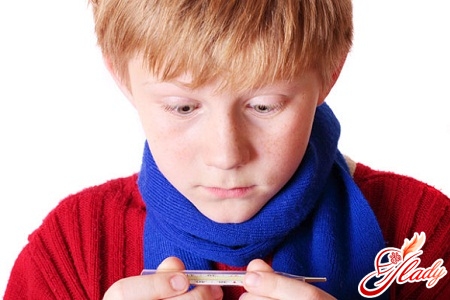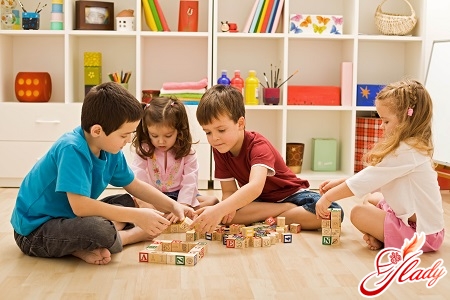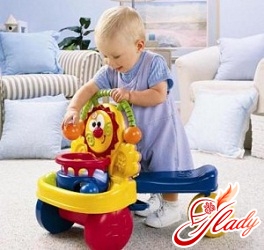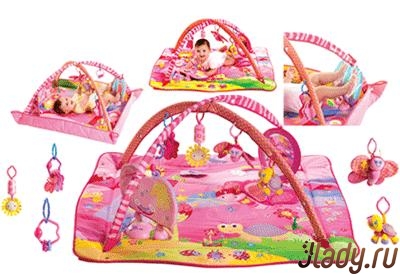 When there is an animal in the house that can not beonly a friend for each of you, but also to find a common language with the child - that's real happiness. And, if you do not have any animals, then prepare for the fact that your baby will say at one point that he wants a dog, a cat, a canary or somebody else. Usually this news is somewhat shocking to adults: moms and dads are not ready to take care of pets even in the hustle and bustle of domestic chores. Such children's requests are a real exam for restraint, whether you can refuse the baby or go on an occasion, forgetting that the entire responsibility for the animal will fall on you. But not everything is so terrible. If you choose the right animal, it will not cause any trouble in nursing or in education. And our advice will help you avoid tears and family dramas. To achieve the result when the child completely independently takes care of the pet is impossible, therefore, dear parents, do not bother with the idea that a child of any age without a reminder will change the litter, walk, bathe and feed his pet. This can be achieved if the grown-up child moves to a separate apartment, which means that the share of responsibility for the life and health of animals in the house lies with you. In families where animals appeared earlier than children, such questions arise less. Children from the time of birth begin to communicate with pets, so it's not necessary to decide when you can start making friends with a kitty or a dog. Gradually, growing up, the kid takes an example from his parents and learns to take care of them and take responsibility for the animals in the house. But if you have not yet settled a small animal or bird, then they should start taking into account the age of the children, taking into account the mental and physical characteristics of the baby and the future four-legged or feathered friend.
When there is an animal in the house that can not beonly a friend for each of you, but also to find a common language with the child - that's real happiness. And, if you do not have any animals, then prepare for the fact that your baby will say at one point that he wants a dog, a cat, a canary or somebody else. Usually this news is somewhat shocking to adults: moms and dads are not ready to take care of pets even in the hustle and bustle of domestic chores. Such children's requests are a real exam for restraint, whether you can refuse the baby or go on an occasion, forgetting that the entire responsibility for the animal will fall on you. But not everything is so terrible. If you choose the right animal, it will not cause any trouble in nursing or in education. And our advice will help you avoid tears and family dramas. To achieve the result when the child completely independently takes care of the pet is impossible, therefore, dear parents, do not bother with the idea that a child of any age without a reminder will change the litter, walk, bathe and feed his pet. This can be achieved if the grown-up child moves to a separate apartment, which means that the share of responsibility for the life and health of animals in the house lies with you. In families where animals appeared earlier than children, such questions arise less. Children from the time of birth begin to communicate with pets, so it's not necessary to decide when you can start making friends with a kitty or a dog. Gradually, growing up, the kid takes an example from his parents and learns to take care of them and take responsibility for the animals in the house. But if you have not yet settled a small animal or bird, then they should start taking into account the age of the children, taking into account the mental and physical characteristics of the baby and the future four-legged or feathered friend.
From 2 to 10 years
Up to 2 years it is not necessary to start new animals inhouse and let the children to the saucers, trays and litter of those who are present. The matter is that the kid still does not have sufficient immunity and all vaccinations are not delivered to him, and besides, children of this age get acquainted with the surrounding worlds, trying it on taste. Just do not focus on the cat accessories or move them to another place to avoid tears and moods.
From 2 to 4 years
Pets and children are starting to be beautifulget along with each other. But do not ignore the playing couple, because the child, due to its features, quickly switch attention from one subject to another, can confuse Barsik with a soft toy, grab, scare and remain scratched. It is good, if the animal and the baby get off with fright, but each of them can cause harm to each other, which in the future will affect the nature of the pet and possibly on the nature of the child, discouraging any communication with animals.
From 5 to 6 years
At the age of 5-6 years, all children begin to askA dog, a bird or a cat, especially if the house does not have pets at all. Be ready that with a walk your favorite child can return not alone, but with a homeless mongrel, stating that now the dog will live with you. In principle, there is no big trouble in this, but if you are not particularly happy with the prospect of having a mongrel at home, take care of it in advance - by purchasing a thoroughbred puppy. At this age, children begin to realize that there are other forms of life. The love of children for animals is unlimited, sometimes the animals themselves suffer from excessive passion, so explain to the child how to be friends with Murka or Bobik. But at the same age, a toddler can manifest excessive cruelty without realizing it and considering the animal one of the toys through which he studies the world. Domestic pets sensitively feel both pain and intention of a tomboy to pull at the tail or mustache, so sometimes temporarily hide under the sofa or under the bed. However, most of them are not glamorous, which means that the child learns not to hurt his pets, since at five he is already able to analyze his actions for a response from the outside.
7 years
At the age of 7 years the child goes to school, where hisfirst of all acquainted with the concepts of discipline and regime. And from now on he is quite capable of taking on most of the responsibility for the animal. He will not forget to give food or clean the cage in time, and also to remind you that it's time for you to go out together to walk your pet. If the dog is small and the conditions allow you to let the child go with him alone, at least once a day, then for both of them walks will bring more joy. Since for adults, walking with animals is an obligatory occupation, monotonous and sometimes boring, and for the child this is another opportunity to play with a friend. But here's the blackmail of the child, telling him that you buy a dog in exchange for good behavior or evaluation, you can not. First, after buying an animal, his behavior can become deplorable again, and secondly, you will let know that everything, even a friend can be bought or the child will treat the puppy as an inanimate object, since he was bought as a reward.
From 8 to 10 years
In 8-10 years, children become soindependent, that they can be entrusted to younger brothers and sisters for a while, not to mention a dog or a cat. So do not be afraid that the child will feed the dog with jam or trim the cat hair.
Cats and dogs, and other animals
 If you do not want difficulties in caring fora pet, then choose rodents, since they are the most unpretentious. Guinea pigs, hamsters, chinchillas, rabbits and other mice are inquisitive, peaceful and very rarely mischievous. In addition, being relatively wild, they are easy to tame. First, feed him with hands, and then, when the animal itself sits on the palm of your hand, stroke, but do not limit freedom. And rodents distinguish all households by their voices, so they easily recognize you and the child, but they hide from strangers. Not all dogs are equally loyal, this should be remembered if the child persuaded you to buy a puppy. Not every four-legged friend lets you pull his tail or ears, agrees to long active games or to other children's pranks. If you decide to have a companion dog for a child, then terriers, Irish setters, schnauzers, collies, Newfoundlands, retrievers, German boxers, poodles and pugs - are most suitable for this purpose. They are active, friendly and playful, besides they are easy to train and can protect the child in case of danger. But it's almost impossible to say how a friend or a puppy taken at a shelter will behave. But if the child and the puppy are already playing together, then the breed becomes unimportant, because they understand and love each other. Dvornyaga can become a real defender and a devoted companion, well, to all other things, such dogs are much less likely to get sick, and mongrelness does not affect the dog's mental abilities in any way. The dog is good, but the cat does not have to walk. Cats have the widest range of individual qualities, and with their meowing they transmit up to several hundred sound nuances, so each cat has a unique character regardless of the breed. The cat feels the mood of the whole family and each of its members separately, she will have fun and play if the house is fun and hurries to hide behind the chair if she is pulled by the tail or in the apartment someone finds out the attitude. Whoever cat will come softly to comfort a frustrated child or an adult. But, to train a cat is not so simple, it's not a dog, and no matter how you like, most of the time the kitty will walk by itself. But to know where the toilet is, do not jump on the table or on the keyboard you can teach even a kitten. If a cat does not know simple rules, it is the fault of the master or mistress, not her. By the way, cats are not afraid to leave houses alone - they are calm enough not to spoil something in the apartment, and the food can be left with a margin for a couple of days and before leaving change the filler in the tray. For middle-aged children, starting from 8-10 years old, you can buy fish, insects and amphibians, as they are interesting to observe, and the child has already got the assiduity and care developed. If the aquarium is small, then care for it is quite simple: you need to install equipment that warms the water, monitor the temperature and freshness of water, periodically clean the glass with a magnetic scraper from the plaque, and turn on the fish in the daytime. Well, do not forget to feed and turn on the oxygen compressor. To begin with, an aquarium is suitable for 30-40 liters, otherwise the child will get tired of caring for fish and they will quickly bother him. The child himself can choose the color of the soil, driftwood and vegetation to create the interior in the aquarium that he likes. Since 10 years, children can give birds, usually canaries or parrots. The canary is the best friend and companion for music lessons, and if your child is attending a music school, the canary is one of the few birds with pleasure singing in captivity. Canaries have a unique ability to anticipate danger, in particular they are very sensitive to methane. Previously, miners descended into the mines along with them - and if the canary stopped, then the proportion of methane in the air was exceeded, and the miners climbed up. Wavy parrots are quite beautiful, but nervous birds. They do not tolerate long trips, tiskanye and cats. A cat can be completely indifferent to the bird, but parrots can only experience stress from one species of predator. This badly affects the health of the bird, the parrot becomes almost impossible to tame, not to mention the training. But if you decide to have wavy parrots, then remind the children that they love to swim, but forced washing, and even with soap, will have a bad effect on the bird. In males, feathers on the forehead shine at night, especially if the birds were in the sun for a long time. Do not be scared, your house is not visited by ghosts or ghosts, but the child is better warned about it in advance. Well, when you and the child decided what your friend will be, then after the purchase, be sure to visit the veterinarian, so that the animal is de-worming, and he was given all the vaccinations. In addition, all members of the family it is not out of place before buying an animal to visit an allergist, so that later you do not have to look for new owners for a cat, if someone starts to sneeze. We advise you to read:
If you do not want difficulties in caring fora pet, then choose rodents, since they are the most unpretentious. Guinea pigs, hamsters, chinchillas, rabbits and other mice are inquisitive, peaceful and very rarely mischievous. In addition, being relatively wild, they are easy to tame. First, feed him with hands, and then, when the animal itself sits on the palm of your hand, stroke, but do not limit freedom. And rodents distinguish all households by their voices, so they easily recognize you and the child, but they hide from strangers. Not all dogs are equally loyal, this should be remembered if the child persuaded you to buy a puppy. Not every four-legged friend lets you pull his tail or ears, agrees to long active games or to other children's pranks. If you decide to have a companion dog for a child, then terriers, Irish setters, schnauzers, collies, Newfoundlands, retrievers, German boxers, poodles and pugs - are most suitable for this purpose. They are active, friendly and playful, besides they are easy to train and can protect the child in case of danger. But it's almost impossible to say how a friend or a puppy taken at a shelter will behave. But if the child and the puppy are already playing together, then the breed becomes unimportant, because they understand and love each other. Dvornyaga can become a real defender and a devoted companion, well, to all other things, such dogs are much less likely to get sick, and mongrelness does not affect the dog's mental abilities in any way. The dog is good, but the cat does not have to walk. Cats have the widest range of individual qualities, and with their meowing they transmit up to several hundred sound nuances, so each cat has a unique character regardless of the breed. The cat feels the mood of the whole family and each of its members separately, she will have fun and play if the house is fun and hurries to hide behind the chair if she is pulled by the tail or in the apartment someone finds out the attitude. Whoever cat will come softly to comfort a frustrated child or an adult. But, to train a cat is not so simple, it's not a dog, and no matter how you like, most of the time the kitty will walk by itself. But to know where the toilet is, do not jump on the table or on the keyboard you can teach even a kitten. If a cat does not know simple rules, it is the fault of the master or mistress, not her. By the way, cats are not afraid to leave houses alone - they are calm enough not to spoil something in the apartment, and the food can be left with a margin for a couple of days and before leaving change the filler in the tray. For middle-aged children, starting from 8-10 years old, you can buy fish, insects and amphibians, as they are interesting to observe, and the child has already got the assiduity and care developed. If the aquarium is small, then care for it is quite simple: you need to install equipment that warms the water, monitor the temperature and freshness of water, periodically clean the glass with a magnetic scraper from the plaque, and turn on the fish in the daytime. Well, do not forget to feed and turn on the oxygen compressor. To begin with, an aquarium is suitable for 30-40 liters, otherwise the child will get tired of caring for fish and they will quickly bother him. The child himself can choose the color of the soil, driftwood and vegetation to create the interior in the aquarium that he likes. Since 10 years, children can give birds, usually canaries or parrots. The canary is the best friend and companion for music lessons, and if your child is attending a music school, the canary is one of the few birds with pleasure singing in captivity. Canaries have a unique ability to anticipate danger, in particular they are very sensitive to methane. Previously, miners descended into the mines along with them - and if the canary stopped, then the proportion of methane in the air was exceeded, and the miners climbed up. Wavy parrots are quite beautiful, but nervous birds. They do not tolerate long trips, tiskanye and cats. A cat can be completely indifferent to the bird, but parrots can only experience stress from one species of predator. This badly affects the health of the bird, the parrot becomes almost impossible to tame, not to mention the training. But if you decide to have wavy parrots, then remind the children that they love to swim, but forced washing, and even with soap, will have a bad effect on the bird. In males, feathers on the forehead shine at night, especially if the birds were in the sun for a long time. Do not be scared, your house is not visited by ghosts or ghosts, but the child is better warned about it in advance. Well, when you and the child decided what your friend will be, then after the purchase, be sure to visit the veterinarian, so that the animal is de-worming, and he was given all the vaccinations. In addition, all members of the family it is not out of place before buying an animal to visit an allergist, so that later you do not have to look for new owners for a cat, if someone starts to sneeze. We advise you to read:









